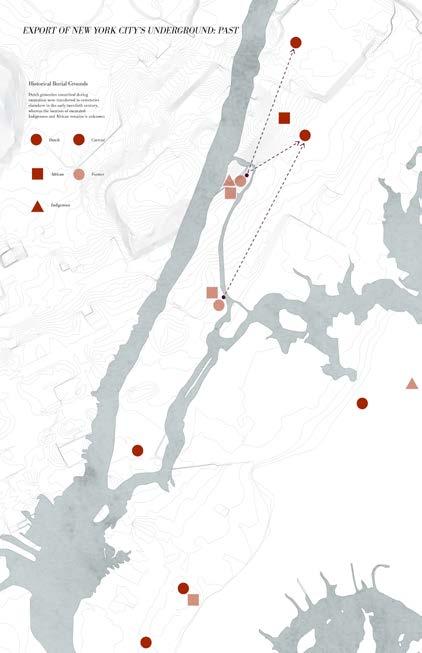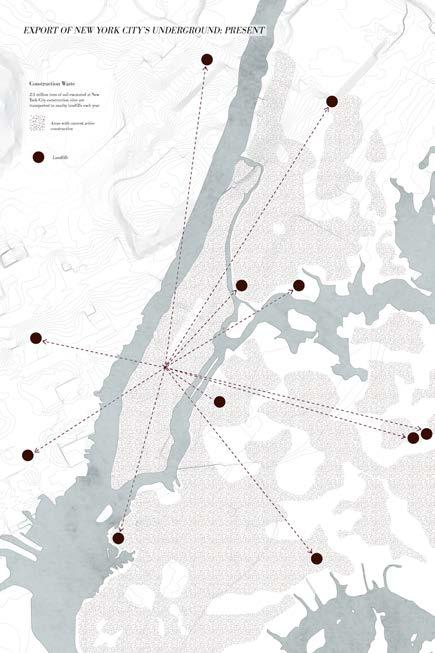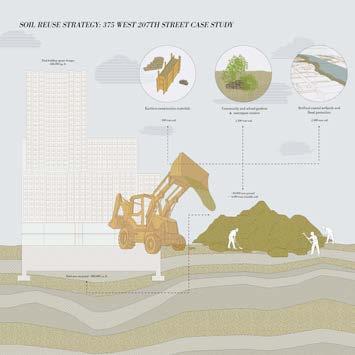
1 minute read
STRATEGIC SOIL
Columbia University GSAPP
Core Studio I
Advertisement
Critic Patricia Anahory
Fall 2022
This project explores the history of the underground— and excavation into the underground—in Manhattan’s northernmost neighborhood of Inwood. There are records of three historical burial grounds in Inwood, none of which are still in existence: one belonging to the Indigenous Lenape people, one belonging to Dutch colonizers, and one belonging to the African people that the Dutch enslaved. As New York City contractors began ground leveling in Inwood in the early twentieth century, these burial grounds were excavated and discarded. Presently, substantial rezoning of Inwood has ushered in significant new construction in the same territory where the burial grounds once lay. Despite the fact that the ground excavated will contain large quantities of valuable soil, the soil will nonetheless be exported out of New York City and discarded in landfills, just as the excavated graves were in the early twentieth century.
Site analysis maps | Comparison between the excavation and dispersal of New York City Indigenous, African, and Dutch burial grounds with that of construction soil.

Strategy diagrams | The project proposes a strategy for ensuring that Inwood’s excavated soil remains in Inwood in the aftermath of future construction projects. Using 375 West 207th Street—a high rise planned for construction in 2023—as a case study, detailed calculations show how excavated soil could be redistributed; some may be used for the construction of artificial coastal wetlands and flood protection barriers along Inwood’s eastern waterfront, some could be used to create earthen construction materials such as earth bags and compressed earth blocks, and the remaining soil would be repurposed for rammed earth public infrastructure, including benches and park dividing walls (right). The benefits of such a strategy would be manifold: to marginally reduce construction waste and carbon emissions resulting from the transportation of this waste to landfills, and to correct for the historical erasure of Inwood’s underground.











